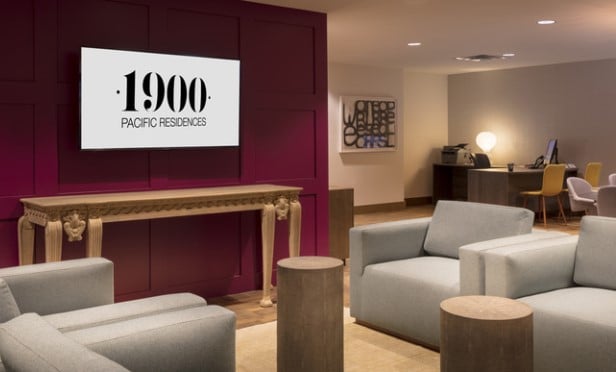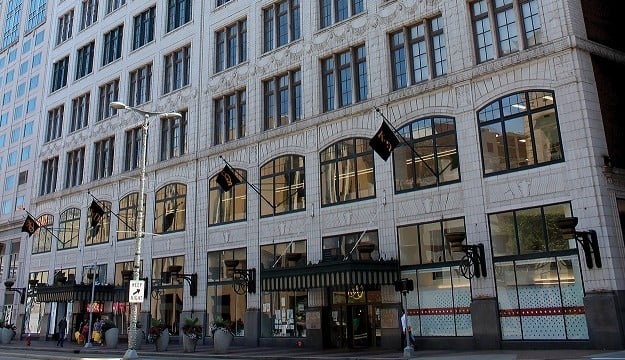Sustainable development is a whole-system approach to best utilize design and building techniques that diminish environmental impact and lessen energy consumption of a building, while contributing to the health of its occupants.
But, most important, sustainable development contributes to the bottom line for both the developer and the tenant. To identify standards that result in sustainable development, the US Green Building Council established a Leadership in Energy and Environmental Design Green Building Rating System. This voluntary national standard supplies a framework for assessing building performance and emphasizes state-of-the-art strategies for sustainable site development.
Since 2000, 6% of new construction in the United States--or nearly 563 million sf--adheres to LEED standards. Communities, cities and states across the nation, along with the Federal government, are embracing the sustainable or green movement and calling on developers to produce properties that meet a minimum LEED standard.
The Environmental Protection Agency intends to make all new facility construction and new building acquisitions projects 20,000 gross sf or larger meet LEED Silver standards, and the US Department of State has committed to using LEED on the construction of new embassies worldwide during the next 10 years.
Arizona, California, Maryland and Nevada are among states that require all new and renovated state-owned or funded facilities to meet LEED standards or incorporate renewable energy. And the standards aren't limited to commercial development. The Florida Community Loan Fund, the Florida Green Building Coalition and Enterprise have joined forces to invest more than $2.7 million in incentives to help build or renovate 200 homes in the state, promoting health, conserving energy and natural resources and providing easy access to jobs, schools and services.
Among the special incentives offered by the groups are extensively discounted loans to developers of affordable residential housing, grants to cover building costs and technical assistance--at no cost through the Florida Solar Energy Center--to help utilize the most cost-effective green strategies and identify local design professionals with green-building expertise.
In 2006, the US Green Building Council, the Congress for the New Urbanism and the Natural Resources Defense Council--three organizations that comprise the nation's leaders among progressive design professionals, builders, planners, developers and the environmental community--will launch LEED for Neighborhood Developments. This rating system, much like the original LEED standards, will integrate the principles of smart growth, urbanism and green building into the first national standard for neighborhood design. LEED-ND will emphasize smart growth aspects and neighborhood design of development while still incorporating a selection of the most important green-building practices, including compact design, proximity to transit, mixed-use, mixed housing type and pedestrian- and bicycle- friendly design.
At the outset, sustainable building plans may suggest higher prices of construction materials and longer development schedules. However, the cost of true sustainable development, in which green characteristics are not only implemented but also fit together to create a building that works well, can be considerably lower in the long term--by as much as 10 times the initial investment. In the development stages, reduced capital costs rank as the top financial benefit. Tax credits and incentives, streamlined permitting and approvals and fewer costs for waste disposal are attractive, cost-effective benefits. Among the greatest savings are those of reduced infrastructure costs.
On the tenant side, lower energy and water costs are often the most distinctive benefits, since green buildings generally use less than half as much energy as standard developments. Tenants will find that employees enjoy working in environments that have been developed with social consciousness. Less exposure to sick-building syndrome and healthy surroundings have a significant impact on employee performance and productivity.
According to the USGBC, employee productivity studies show that perks of a sustainable development can improve employee efficiency by 16%. These savings flow directly to the bottom line, increasing net operating income and resulting in a higher return on investment and building valuation.
Federal and state governments are offering grants, endowments and tax incentives to add to the attraction of building green. In 2005, New York's Green Building Tax Credit (GBTC) was updated as part of the state's budget. The updated package provides an additional $25 million for credit components to be issued in the state through 2009, allowing tax credits to be received through 2014.
Federally, Senators Chris Dodd (D-CT) and Joe Lieberman (D-CT) and Congressman Christopher Shays (R-CT) announced the Georgetown Special Taxing Project as a Green Bond award recipient in January 2006. The US Treasury Department designated the Georgetown Special Taxing District, which will oversee redevelopment of a former wire mill, as a qualified green building and sustainable design project allowing the Taxing District to issue more than $72 million in special tax-exempt bonds that can be used to purchase, construct or integrate renewable energy and sustainable design features.NAIOP is a strong advocate for sustainable development. Along with its member companies, who are committed to developing model properties adhering to the highest standards in the industry, We believe that socially-conscious development is essential to the economic vitality of the industry and the nation.
In 2005, NAIOP, in consultation with the US Green Building Council, established an annual Green Development Award to recognize the growing number of firms engaged in green development. The award's inaugural honoree was Maryland-based Corporate Office Properties Trust for a four-story, 125,000-sf office building that encompassed such sustainable elements as an extreme storm water management system, heat island reduction through usage of a white roof, reduced light pollution and reduced water usage of 40% compared to a typical office building.
Sustainable development will continue to emerge as a cost-effective, responsible opportunity for the commercial real estate industry. Communities, developers and tenants alike will benefit from these properties that will outperform yesterday's developments and lead the way into a future of responsible growth.
Thomas J. Bisacquino is president of the Washington, DC-based National Association of Industrial and Office Properties. The views expressed in this article are the author's own.
© 2025 ALM Global, LLC, All Rights Reserved. Request academic re-use from www.copyright.com. All other uses, submit a request to [email protected]. For more information visit Asset & Logo Licensing.







